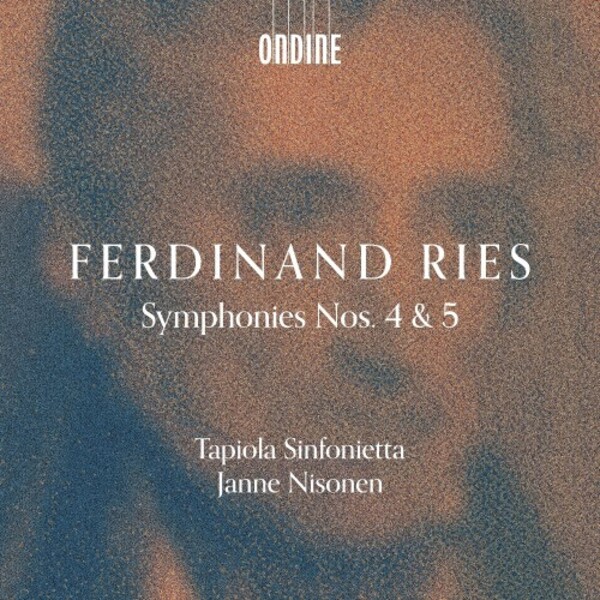RIES Symphonies Nos 4 & 5 (Nisonen)
View record and artist detailsRecord and Artist Details
Genre:
Orchestral
Label: Ondine
Magazine Review Date: 01/2025
Media Format: CD or Download
Media Runtime: 59
Mastering:
DDD
Catalogue Number: ODE1454-2

Tracks:
| Composition | Artist Credit |
|---|---|
| Symphony No 4 |
Ferdinand Ries, Composer
Janne Nisonen, Conductor Tapiola Sinfonietta |
| Symphony No. 5 |
Ferdinand Ries, Composer
Janne Nisonen, Conductor Tapiola Sinfonietta |
Author: Richard Wigmore
It’s too easy, of course, to chide Beethoven’s loyal friend and one-time pupil Ferdinand Ries for what he was not. His cause hasn’t been helped by the master allegedly muttering that ‘he imitates me too much’. Yet which symphonic composer could escape Beethoven’s giant shadow in the 1810s and 1820s? Beethovenian echoes, conscious or otherwise, crop up in both these symphonies, composed in London in 1813 (No 5) and 1818 (No 4). The Beethoven Fifth ‘fate’ motif propels the first movement of No 5, while the Scherzo of No 4 and the rustic Trio of No 5, complete with bagpipe drones, evoke the Pastoral (Ries was present at the 1808 Vienna premiere of both the Pastoral and the Fifth). The game of hunt the allusion (including snippets of the Eroica and at least one Beethoven overture) could go on.
Best, though, to appreciate these attractive, colourfully scored symphonies (both works include trombones) for their own merits rather than as epigones. Ries’s musical personality was more relaxed, less rigorous than Beethoven’s (whose wasn’t?), his invention less distinctive. In his informative notes, Allan Badley points to thematic connections between the movements of No 5. But intensive motivic development à la Beethoven was not Ries’s prime concern. Accumulated tension – say, in the agitated opening Allegro of No 5 – can be dissipated by a tootling horn or oboe solo. After an impressive, harmonically blurred slow introduction, the first movement of No 4 alternates grand martial gestures and frolicking woodwind – a reminder that by 1818 Europe was in the grip of a Rossini craze.
Ries’s themes, if not wildly original, are agreeable and shapely, as in the mellifluous cello solo in the Trio of No 4 and the oboe song that sails in out of the blue in the middle of No 5’s finale – both instances of Ries’s charming sense of orchestral colour. Beethoven reminiscences apart, perhaps the most memorable movements are the Scherzos, with their coursing energy and deft fugato textures. That in No 5 goes off like a rocket. It’s brilliantly played here by the Tapiola Sinfonietta, whose crispness and precision are a delight throughout. A word, too, for the eloquent solos from cello, horn and oboe.
There are good versions of both works from the Zurich Chamber Orchestra under Howard Griffiths (CPO), each coupled with a different Ries symphony. But this new album has the edge in vitality (especially in the quicksilver finale of No 4 and the explosive Scherzo of No 5) and in the clarity of Ondine’s recording.
Discover the world's largest classical music catalogue with Presto Music.

Gramophone Digital Club
- Digital Edition
- Digital Archive
- Reviews Database
- Full website access
From £8.75 / month
Subscribe
Gramophone Full Club
- Print Edition
- Digital Edition
- Digital Archive
- Reviews Database
- Full website access
From £11.00 / month
Subscribe
If you are a library, university or other organisation that would be interested in an institutional subscription to Gramophone please click here for further information.




